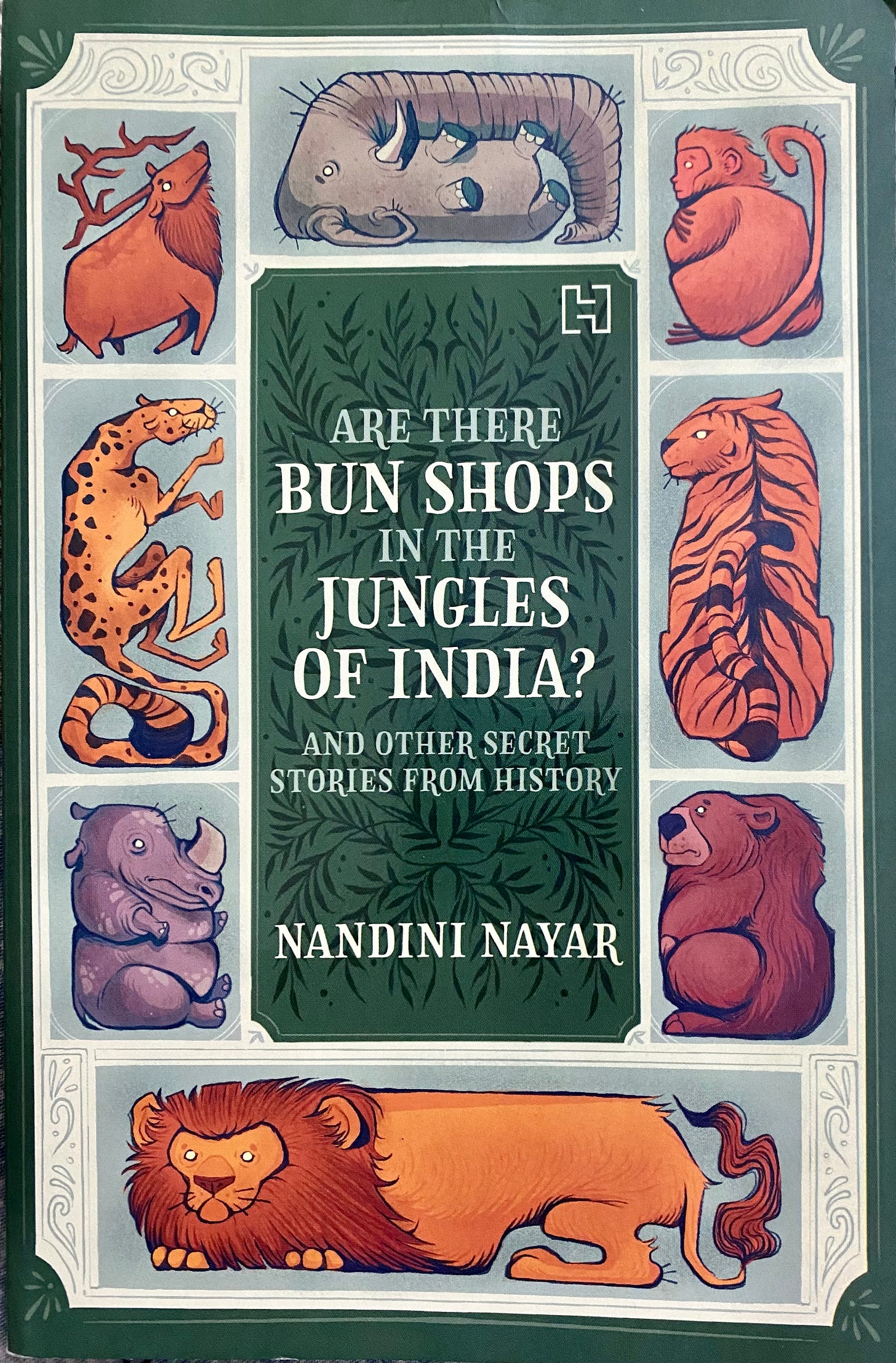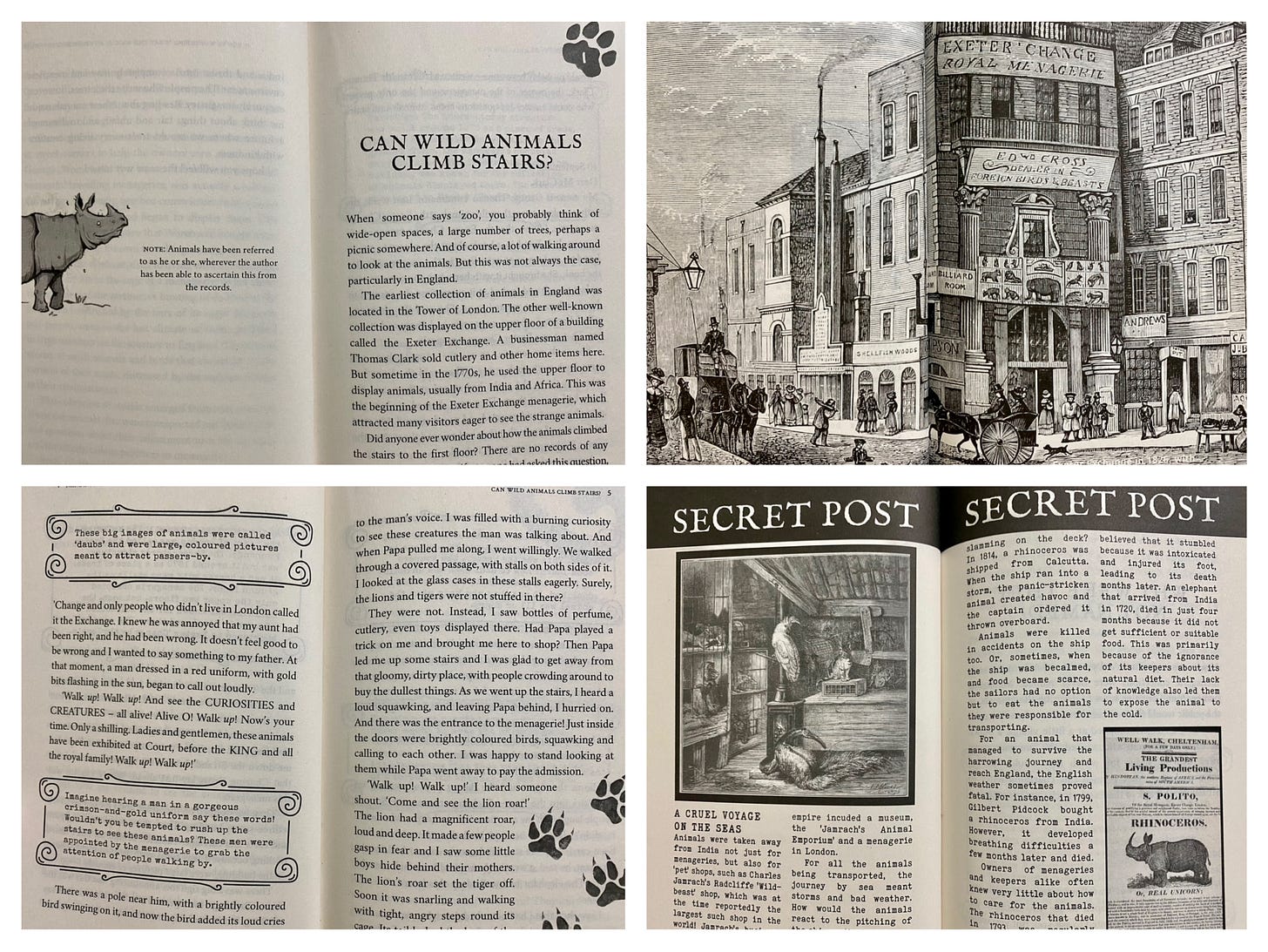#502 - Are There Bun Shops in the Jungles of India? And Other Secret Stories From History
by Nandini Nayar and illustrated by Damini Gupta
“Are There Bun Shops in the Jungles of India? And Other Secret Stories From History” by Nandini Nayar and illustrated by Damini Gupta. Published by Hachette. An engrossing book throwing light upon the animals who found themselves caged and taken to England from the lush jungles of India.
When we talk about Indian history of the last 400 years, it is usually about the British rule and India’s fight for independence. The focus is on us humans and how we as a nation were affected by the colonisation. But what about the animals? Their suffering and plight is never spoken about. The wild animals living in the jungles of India suffered quite a lot thanks to excessive shikar or hunting for sport and pleasure. Fascinated by the prospect of encountering the exotic animals not found elsewhere, the British started hunting and taking back some of the animals to England. These animals were gifted to the royalty and rich people who had a collection of wild and exotic animals. Some were sold to people who ran menageries and put them on public display at a fee. Some were put up for sale in shops and bought as pets!
The animals had to brave long and uncomfortable journeys on ships confined in small cages or boxes. They could hardly move about. The accompanying sailors had no idea about the animals and were often clueless when it came to taking care of them. Already having lost their freedom, the animals were given wrong kind of food or less food and sometimes thrown overboard if found difficult to manage. Those of the animals that managed to reach England had no respite either. From leopards to tigers to lions to rhinos to elephants, their conditions were shocking and heartbreaking. Kept in extremely confined spaces for years together inside buildings and subjected to the display in front of people every day was upsetting enough. Some of them were poked, prodded and teased to add salt to their wounds. The book shares stories of some of these animals through letters imagined to have been written by various children to the owners of the menageries and zoos asking them logically sound questions. Something that will hopefully stop them treating the animals cruelly. They deserved better food, care and freedom. Read the insightful book to know more about these largely unknown tales of animals and the misconceptions or fantasies that people had about them.
The book proved to be a fascinating read thoroughly enjoyed by both me and my nine year old. We were lucky to meet the author and attend a session by her on this topic recently while we were reading the book. The experience made us want to read the book even quicker to know the intriguing stories of the animals. My son felt that this was one of the best non fiction books that he has read so far. We loved the creative format of the narrative through the letters and couldn’t help feeling empathy for the animals who had suffered so much for the sake of amusement of people. The animals developed health issues due to enormous changes in weather compared to their natural habitats, suffered loneliness, lacked exercise and movement thanks to the cramped enclosures. Sometimes they were starved so that they would feed ravenously at a time when visitors would come to watch them being fed. Some of the animals were given the wrong kind of food and even wine sometimes which took a toll on their health and proved fatal. It took so many years for people to develop an understanding of the problems being faced by these animals who deserved better living conditions and dignified treatment. They were not to be considered as money making machines and used for such purposes through their lives and even after their death sometimes. My son was moved by the plight of these animals who once roamed freely in the Indian jungles and felt sorry for what they had endured. The beautiful illustrations gave us a glimpse into the menageries of the times and the animals who lived there. The book is a befitting tribute to the animals whose stories have been buried in the pages of history. Overall this is a “MUST READ” which provides readers with unique perspectives that have never been explored or thought of.
Recommended Age
The book is apt for children aged 10 and above.





